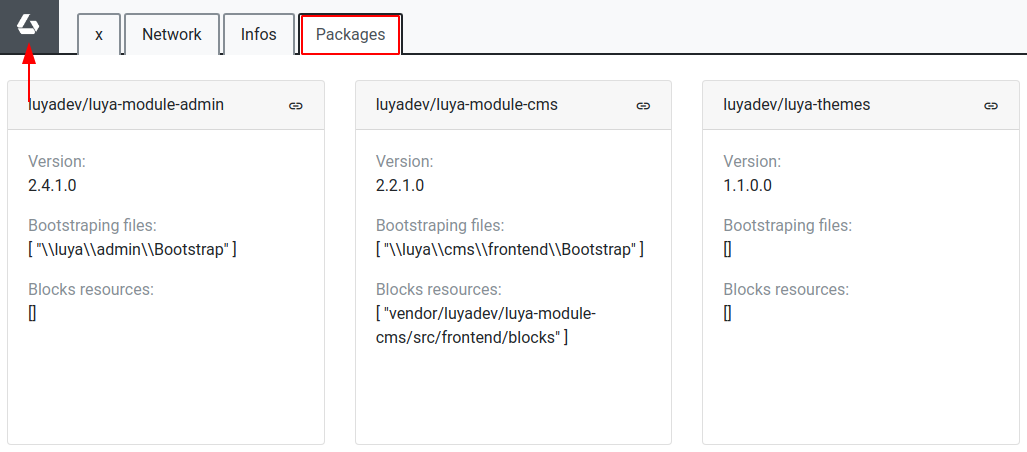Project Module
A very important behavior in LUYA projects are modules. You can always use modules to put your own custom and reusable logic inside. For instance you can put database logic inside of the ActiveRecord models. A module can also provide information for other module, e.g. CMS Blocks.

Module Types
There are two different types of modules:
- Admin - Contains Models, Migrations Administration, NgRest CRUD.
- Frontend - Contains controllers and views, logic for frontend implementations.
TIP
In order to create your custom module you can run the Console Command module/create wizard.
Structure of modules
.
├── admin
│ ├── assets
│ ├── apis
│ ├── importers
│ ├── controllers
│ ├── migrations
│ └── resources
├── frontend
│ ├── assets
│ ├── controllers
│ ├── blockgroups
│ ├── blocks
│ └── views
├── models
└── helpersUse and configure
To integrate a module you have to define it in your config file env-prep.php and / or env-prod.php, it depends on which environment your env.php is returning. E.g. add this to your configs in the modules section:
$config = [
'modules' => [
'contact'=> 'app\modules\team\Module'
]
];Example module
In our example we make a TEAM module which has a frontend and admin module part. All admin modules have by definition the suffix admin, the naming of the modules would look like this in our case:
- team Frontend
modules/frontend/Module.php - teamadmin Admin
modules/admin/Module.php
<?php
namespace app\modules\team\frontend;
class Module extends \luya\base\Module
{
}The Admin module modules/teamadmin/Module.php:
<?php
namespace app\modules\team\admin;
class Module extends \luya\admin\base\Module
{
}Import Method
All modules can contain a luya\admin\base\Module -> import() method which will be called when running the console command import. If luya\admin\base\Module -> import() method returns an array each class must extend from the luya\console\Importer class.
One of the main ideas behind LUYA is to store data in files and import them into your database.
Example response for multiple importer classes:
public function import(\luya\console\interfaces\ImportController $import)
{
return [
'\\luya\\cms\\importers\\BlockImporter',
'\\luya\\cms\\importers\\CmslayoutImporter',
];
}Example code where import directly does handle some code:
public function import(\luya\console\interfaces\ImportControllerInterface $import)
{
foreach ($import->getDirectoryFiles('filters') as $file) {
$filterClassName = $file['ns'];
if (class_exists($filterClassName)) {
$object = new $filterClassName();
$import->addLog('filters', implode(", ", $object->save()));
}
}
}PSR-4 binding with Composer
Sometimes you do not want to use the long namespaces names like app\modules\mymodule and create a shortcut to access your files. In order to add a shorter alias to your namespace you psr-4 bind them in your composer.json file. To do so open the composer.json file and add the autoload section (if not exists):
"autoload" : {
"psr-4" : {
"mymodule\\" : "app/modules/mymodule"
}
}Run the composer dump-autoload command in order to refresh the autoload section of your Composer file. Now you are able to access the app/modules/mymodule files directly with the mymodule module namespace.
